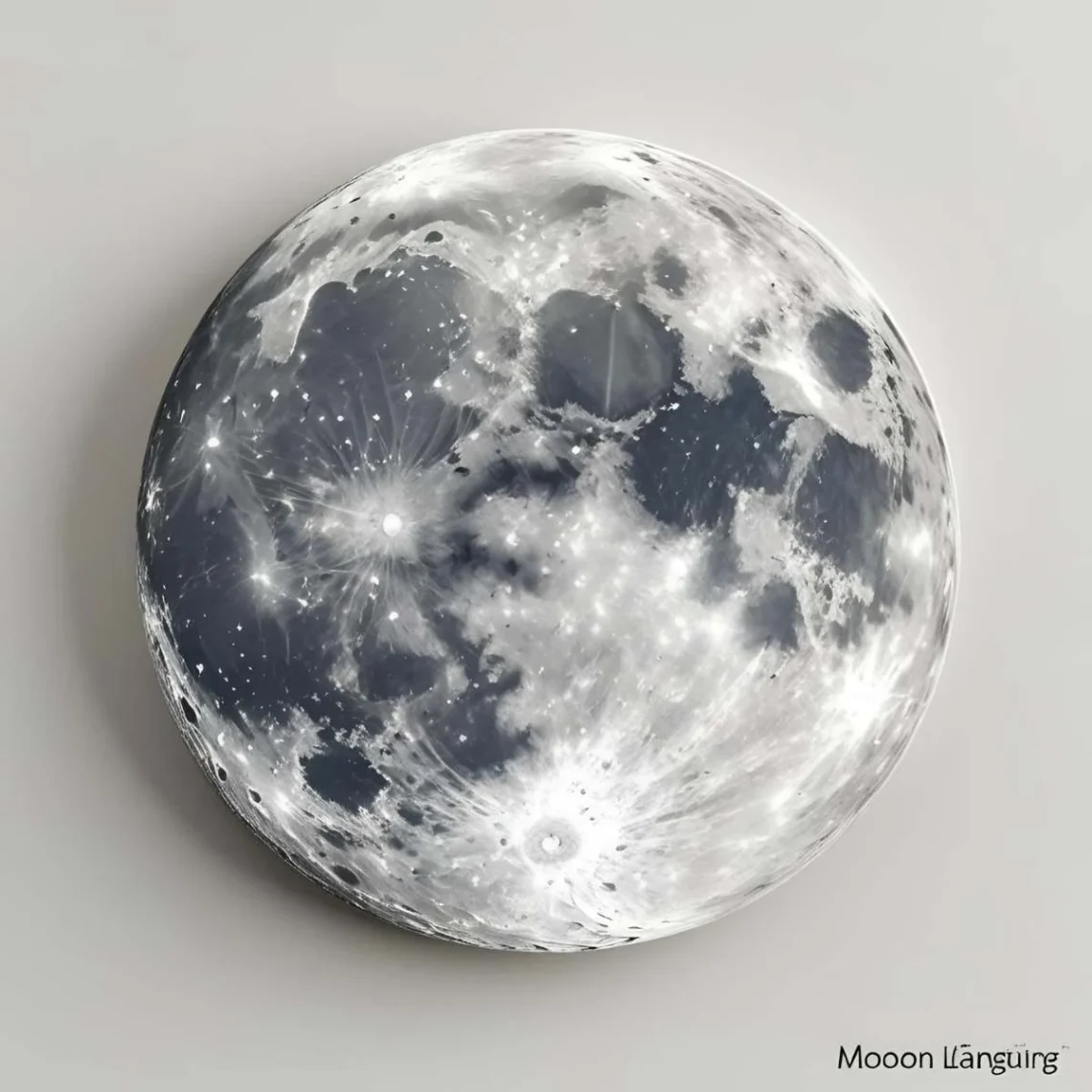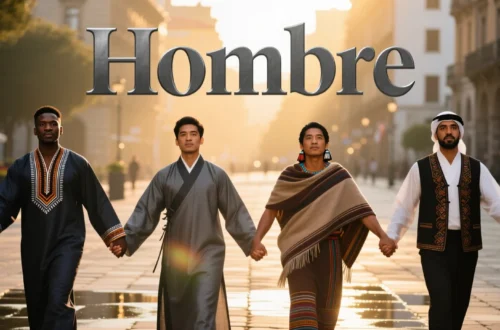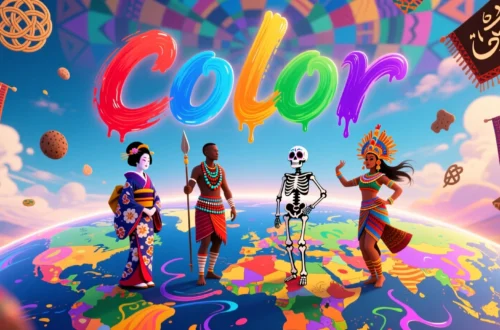Gazing at the moon on a quiet night, I recall my grandmother’s stories of “luna” guiding travelers through Spanish nights. That word, “moon,” evokes wonder across cultures, uniting humanity under its silvery glow.
Whether whispered in a Kyoto temple or sung in a Kenyan village, the term for “moon” carries dreams, myths, and shared awe, shaped by each culture’s unique lens.
Let’s embark on a global journey to explore how people name the moon and what these words reveal about their traditions and beliefs.
Reference Table: “Moon” in Different Languages
| Language | Word/Phrase | Cultural/Linguistic Insight |
|---|---|---|
| French | Lune | Evokes romance, tied to poetic imagery in France. |
| Spanish | Luna | Linked to myths of guidance and beauty in Latin cultures. |
| Italian | Luna | Shares Latin roots, symbolizing love and mystery. |
| German | Mond | A straightforward term, reflecting Germanic clarity. |
| Mandarin | Yuè (月) | Represents harmony, central to Chinese lunar festivals. |
| Hindi | Chand | Tied to romantic poetry and Hindu mythology. |
| Japanese | Tsuki (月) | Symbolizes beauty and transience in Japanese culture. |
| Korean | Dal (달) | Associated with folklore and emotional depth. |
| Arabic | Qamar (قمر) | Means “radiant,” used in poetry across 20+ countries. |
| Swahili | Mwezi | Reflects lunar cycles in East African timekeeping. |
| Zulu | Inyanga | Also means “healer,” tied to spiritual traditions. |
| Yoruba | Òṣùpá | Linked to Yoruba cosmology and divine stories. |
| Maori | Marama | Represents light and guidance in New Zealand. |
| Hawaiian | Mahina | Symbolizes sacred cycles in Hawaiian culture. |
| Cherokee | Nvda | Tied to creation stories and lunar reverence. |
European Languages: The Moon’s Romantic Glow
European languages name the moon with terms steeped in romance and clarity. For instance, in French, “lune” conjures poetic imagery, often linked to love songs hummed in Parisian cafés. Meanwhile, Spanish uses “luna,” a word tied to myths of guidance, celebrated in flamenco and folklore across Spain and Latin America. Similarly, Italian’s “luna” shares Latin roots, evoking mystery and romance, as lovers in Rome gaze at the night sky. In contrast, German’s “Mond” is direct, reflecting the culture’s pragmatic approach, yet it’s still used in fairy tales. Thus, these terms blend Europe’s poetic and practical views, with “lune” and “luna” carrying romantic weight, while “Mond” grounds the moon in everyday wonder.
Asian Languages: The Moon as Harmony and Poetry
Asia’s diverse languages reflect the moon’s role in spirituality and art. For example, in Mandarin, “yuè” symbolizes harmony, central to China’s Mid-Autumn Festival, where families gather under its light. In Hindi, “chand” evokes romantic poetry and Hindu myths, like Chandra, the moon god, celebrated in India’s festivals. Similarly, Japanese uses “tsuki,” a term tied to beauty and impermanence, inspiring haikus in Kyoto’s moonlit gardens. In Korean, “dal” carries emotional depth, linked to folklore about lunar rabbits. Finally, Arabic’s “qamar,” used in over 20 countries like Egypt and Iraq, means “radiant,” fueling poetic verses across the Middle East. These terms highlight Asia’s blend of spiritual reverence and artistic expression, from festive gatherings to quiet contemplation.
African Languages: The Moon in Time and Spirit
In African languages, the moon often ties to timekeeping and spirituality. For instance, Swahili, spoken in over 20 countries like Tanzania and Kenya, uses “mwezi,” reflecting lunar cycles used in calendars and farming. In Zulu, “inyanga” doubles as “healer,” linking the moon to spiritual practices in South Africa, where it guides rituals. Similarly, Yoruba’s “òṣùpá” in Nigeria connects to cosmology, with stories of the moon as a divine entity. These terms, used in communal settings like village gatherings, emphasize the moon’s role in guiding both practical and spiritual life across Africa’s diverse cultures.
Indigenous & Island Languages: The Moon as Light and Guide
Indigenous and island languages name the moon with reverence for its light and cycles. For example, Maori in New Zealand uses “marama,” meaning light, symbolizing guidance in navigation and storytelling. In Hawaiian, “mahina” reflects sacred cycles, tied to fishing and planting traditions. Similarly, Cherokee’s “nvda” connects to creation stories, revered in Native American communities as a symbol of renewal. In Samoan, “masina” signifies the moon’s role in Pacific navigation and communal rituals. Across these cultures, from New Zealand to the Cherokee Nation, the moon is a beacon of guidance, celebrated in songs and ceremonies.
Cultural Insights: The Moon’s Timeless Legacy
Names for the moon carry centuries of meaning. In Latin, “luna” (1st century BCE) shaped Romance languages, tying the moon to myths of love. In Chinese culture, “yuè” reflects ancient lunar calendars, guiding festivals since the Han Dynasty. Moreover, in African traditions, terms like “mwezi” stem from trade-era timekeeping, while “inyanga” links to spiritual healing. In Pacific cultures, “marama” and “mahina” trace back to Polynesian navigation, using the moon’s light to cross oceans. These words are vessels of history, carrying stories of navigation, worship, and art, uniting humanity under the same celestial glow.
Proverbs and Sayings: Wisdom of the Moon
- French: “La lune éclaire les rêves.” (The moon lights dreams.) – Ties the moon to inspiration.
- Hindi: “Chand jaisa dil, roshan aur naram.” (A heart like the moon, bright and soft.) – Evokes love.
- Swahili: “Mwezi unapokaa, wakati unapita.” (When the moon stays, time passes.) – Reflects cycles.
- Japanese: “Tsuki wa kokoro no kagami.” (The moon is the heart’s mirror.) – Highlights introspection.
- Yoruba: “Òṣùpá n tan imọlẹ ayọ.” (The moon spreads the light of joy.) – Links to positivity.
FAQs
Why do some moon names sound similar?
Shared linguistic roots, like Latin “luna” in Romance languages, and cultural exchanges, like Arabic’s influence on Swahili, create similarities.
What’s the oldest term for “moon”?
Latin’s “luna” (circa 1st century BCE) is among the earliest recorded, influencing many modern terms.
How do cultures shape the moon’s name?
Spiritual cultures (e.g., African, Indigenous) tie the moon to rituals, while artistic cultures (e.g., Asian) emphasize its poetic beauty.
Conclusion
From “luna” in Spain to “mwezi” in Tanzania, the word for “moon” weaves a global tapestry of wonder and connection. Each term, whether the poetic “chand” in Hindi or the guiding “marama” in Maori, reflects cultural values while celebrating our shared awe of the night sky. Consequently, these words remind us that the moon unites all people under its glow, inspiring dreams across borders. How do you say “moon” in your language, and what stories does it hold? Share your thoughts below—we’re eager to hear your celestial tales!






